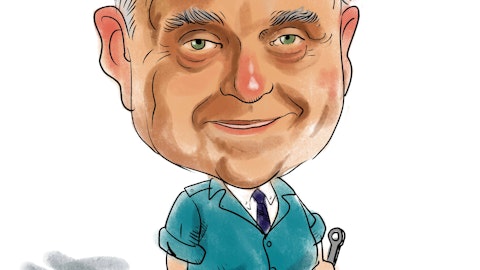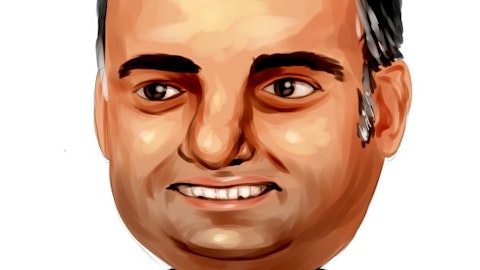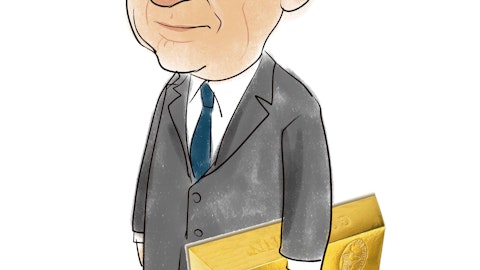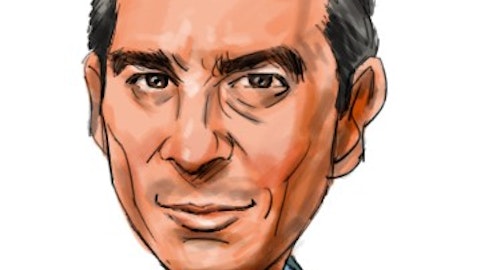Richard Perry’s Perry Capital has a very long and successful track record of beating the market by taking less risk than the market. During the past 22 years, Perry Capital had only one losing year: 2008. Perry Partners International, Richard Perry’s flagship multistrategy fund, lost 26.8% in 2008, gained 25.2% in 2009, and returned 16.2% in 2010. Perry Capital manages $14 Billion and has an average return of 15.4% since inception.
Richard Perry uses the same strategies described in Joel Greenblatt’s book, You Can Be a Stock Market Genius. He follows an event-driven approach and invests in companies in mergers and acquisitions, bankruptcy, spinoffs or any other type of restructuring. There are a lot of hedge funds trying to generate alpha by using these strategies though. So, Richard Perry seeks out companies that are willing to work with him to make changes that unlock value.
Richard Perry used to work under Robert Rubin at Goldman Sachs. Like Julian Robertson’s tiger cubs, there are several Goldman Sachs grads: Eton Park’s Eric Mindich, Farallon’s Thomas Steyer, ESL’s Edward Lampert, ad Och-Ziff’s Daniel Och. Unlike the tiger cubs, Perry doesn’t like to share ideas with the members of his former group. He prefers talking to CEOs to try to gather insights nobody else has. Currently Paul Leff, Alp Ercil, Andy Isikoff, David Russekoff, George Brokaw, and Adam Stanislavsky are among the members of Perry’s team. Before investing in a stock, they gather as much information as possible about the company, its management, competitors, and suppliers. They try to predict where the company is heading, but more importantly they try to find ways to increase the company’s profits (i.e. spin-offs, mergers). Then they approach the management to see if they want to make the necessary changes. Richard Perry usually stays away from uncooperative companies.
Since Perry Capital follows a fundamental analysis approach and are willing to wait for their investments to pay off, outsiders might be able to monkey their long portfolio. At the end of September, Perry had $6.4 Billion in stocks and options. In December, the size of the 13F portfolio shrank to $4.1 Billion. During the last three months of 2010, Richard Perry made bullish bets of at least $10 Million on the following companies:
| Company | Ticker | Return | Value (Millions) |
| AbitibiBowater Inc | ABH | 24.6% | 19 |
| Best Buy Co Inc | BBY | -2.0% | 31 |
| Brookfield Infrast Partners | BIP | 7.5% | 47 |
| CommScope Inc | CTV | 0.8% | 52 |
| Dollar Thrifty Automotive | DTG | 9.1% | 25 |
| General Motors Corp | GM | -1.1% | 74 |
| Home Depot Inc | HD | 6.9% | 13 |
| Lowe’s Cos Inc | LOW | 0.5% | 13 |
| Mastercard Inc | MA | 13.2% | 20 |
| Massey Energy Co | MEE | 17.6% | 37 |
| Visa Inc | V | 6.7% | 28 |
The weighted average return for these 12 stocks was 6% since the end of December, almost the same as the SPY’s 5.9% return during the same time period. Had Perry added equal dollar amounts of each stock into his portfolio, his return would have been 7.6%. The main reason is his largest position, General Motors, had a negative return since the beginning of this year. GM was also billionaire investor Leon Cooperman’s largest new stock pick during the fourth quarter. Cooperman’s Omega Advisors also added AbitibiBowater (ABH) to its portfolio. Value investor Mohnish Pabraiadded Brookfield Infrastructure Partners (BIP) to his portfolio as well. Bridger Management’s Roberto Mignone bought Dollar Thrifty Automotive (DTG) during the third quarter. Home Depot (HD) is one of Thomas Steyer’s largest positions. It seems like Richard Perry is getting a little bullish about the housing market because he added Lowe’s (LOW) to his portfolio as well. He doesn’t have a preference for either HD or LOW, so he added equal amounts of each stock. Like Daniel Loeb, Richard Perry benefited from the jump in Massey Energy (MEE). Finally Perry Capital added credit card companies Visa and Mastercard to its portfolio, which was a timely move.
In addition to these new stock picks, Richard Perry added significant amounts to some of his existing positions. He almost tripled his Microsoft (MSFT) call options. Whitney Tilson is also very bullish about Microsoft. Perry also increased his Genzyme (GENZ) by 118%.
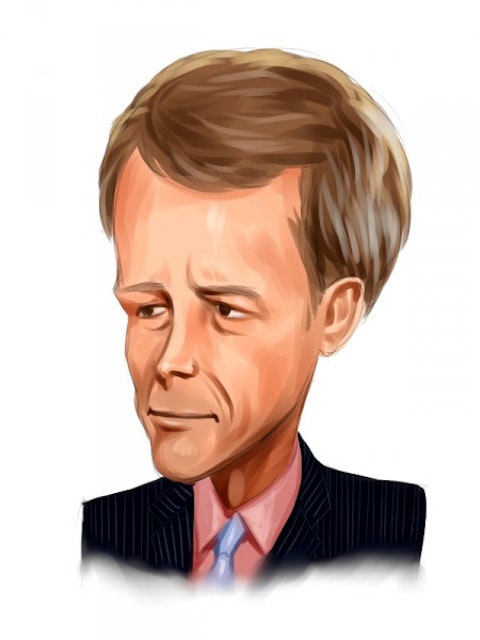
Richard Perry uses ETFs extensively to protect his portfolio from market declines. That’s why the biggest position in his portfolio is a put option on SPY with a notional value of $1.3 Billion. He also has put options on Russell 2000 ETF (IWM) and Emerging Markets ETF (EEM) totaling more than $500 Million. Other than these, here are the 10 largest positions in Perry’s portfolio at the end of December:
| Company | Ticker | Return | Value (Millions) |
| Endurance Specialty Holdings* | ENH | 5.0% | 329 |
| Genzyme Corp | GENZ | 1.9% | 249 |
| Potash Corp of Saskatchewan | POT | 21.7% | 155 |
| Citigroup Inc | C | 3.2% | 150 |
| Microsoft Corp | MSFT | -2.4% | 145 |
| Universal American Corp | UAM | -0.7% | 139 |
| Royal Bank of Scotland | RBS | 11.5% | 125 |
| General Motors Corp | GM | -1.1% | 74 |
| North American Energy Partners | NOA | -4.1% | 56 |
| CommScope Inc | CTV | 0.8% | 52 |
Overall, these 10 stocks returned 4.5% since the end of December, underperforming the SPY by 1.4 percentage points. His best performing large position is Potash, which is also one of the 10 stocks enormously owned by hedge funds. Perry also owns several different preferred shares of RBS, totaling nearly $250 Million. We combined the top two RBS holdings in the table above. Unisys Corp (UIS), Alcon (ACL), Semiconductor HOLDRs (SMH), and Brocade Communications (BRCD) were among the stocks Perry discarded during the fourth quarter.
* Richard Perry sold all of his Endurance Specialty holdings at the end of January.

